The Dip Created Horrendous Shooting Habits? How This Small-Town Texas Coach Used A Better Shooting Approach
Now, you're going to learn about when I taught some athletes to dip the ball during the shooting motion and how it had horrendous effects...
Then you're going to learn about a new technique that will make you a better shooter! It's one of the secrets behind players like Steph Curry and Trae Young developing such high accuracy from LONG range.
It came from a small-town Texas who was one of the best shooters in the world.
To give this some context, in a previous article, we covered...
- Irrefutable video evidence that the best shooters in the world dip the ball to their stomach or hip level after they catch the ball on perimeter jump shots.
- Players like Steph Curry and Trae Young dip the ball and have a very quick release.
- My hesitancy in teaching the dip due to it being a natural occurrence. Many shooters weren't even aware that they dipped the ball.
- Some of my worst shooters were previously taught to eliminate the dip and developed inaccurate, robotic shots.
If you'd like to learn the full explanation of these shooting concepts mentioned, you can click here.
Now, let's get back to where we left off from the previous article...
After years of hesitancy, I started teaching the dip to some athletes that I trained.
Prior to working with them, these shooters eliminated their dip in the shot process and immediately brought the ball to their shoulder / face level after catching the ball. They shot a low percentage and they lacked rhythm and fluidity that high-level shooters possessed. Their shots were quite robotic.
However, after I taught and incorporated the dip with them, some of the shooters developed new issues shortly after...
- The dip became an exaggerated motion.
This motion did not represent the great shooters we were trying to model or imitate. Their dip was not compact and quick. - For some shooters, it exaggerated a catapulting motion.
In some cases, the arc was reduced, the shot was flat, and they didn't improve.
I would put my hand next to their ear, so they could feel it when they brought the ball backwards. However, this only temporarily fixed the problem. It didn't have a lasting effect. - The shot lacked the same timing and coordination of the great shooters they were trying to emulate.
The upper-body motion of the shot looked too quick and rushed.
Here is one of the players who never brought the ball below his shoulder. I taught him to dip the ball. However, life got in the way and I didn't check in for a few months after we incorporated this change.
For whatever reason, the dipping motion got exaggerated and the shooting motion regressed to this. The coordination and rhythm was also off.
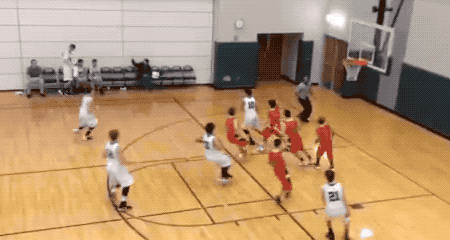
Good news is we fixed it with everything I'm about to show you below!
Then he became an all conference player in one of the best high school leagues in the country. He even played a couple of seasons at the college level.
Small Town Texas Coach to the Rescue
Almost a decade ago now, I started talking to a coach named Rick Penny.
Rick was an outstanding college player, one of the best shooters in the world, shot 61% from the field as a guard during his senior college season, and was even invited to an NBA tryout by the San Antonio Spurs.
There was a component in the shooting motion he taught. At that time, he called it "The Tuck."
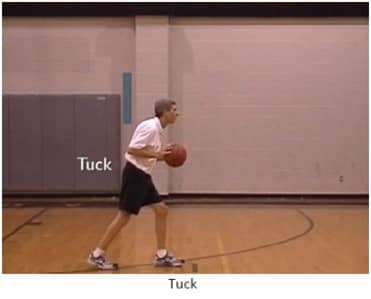
The Tuck is a position when the player brings the elbow back with the ball around the chest to the stomach area.
At Tuck, the forearm is parallel to the floor and the elbow/upper arm is angled slightly back.
You immediately cushion the ball to this Tuck position when getting ready to shoot.
You will notice there is a slight bend backwards in the wrist. Coaches call this a "wrinkle in the wrist."
Cushioning the ball close to your body (The Tuck) does a few very important things...
- The ball path goes up and out as a result of the ball being brought close to the body.
There is less wasted motion and fewer catapulting motions. - There is a better arc and a softer shot.
You tend to get more of those "shooter's bounces" and "shooter's rolls." - Higher release point and more shooting range since you are riding the wave of energy created (inertia).
This is one reason that Trae Young and Steph Curry can shoot from such a far distance with accuracy. - A compact and efficient dip that emulates the elite shooters in the world. With some athletes, the Tuck reduced the dip slightly yet provided all of the benefits.
Some players become adept at keeping the ball around their lower chest level on the dip.
When I teach the Tuck, I typically teach the lower chest/stomach height. However, if players want to keep it higher or dip it slightly lower, I'm okay with that as well.
I also don't talk about dipping the ball at all with players. I just show them this Tuck position and teach them how to transition through the shot motion as you'll learn below.
Here is another great thing...
The Tuck is adaptable for all shooters!
- Non-dippers and dippers
- One motion versus two motion
- Hop, 1-2 step, or both
- Turned or squared
- Etc.
It doesn't matter. It works for all!
Don't Skip This! Incorporating the Set Point
Another aspect of the shot motion taught is the set point.
This is very important because this is when shooters start to extend their legs to jump within the shooting motion!
If this isn't done properly, it can throw off timing and shooting accuracy.
The ball will transition from Tuck to Set to the shooting release in a fluid, constant motion. Your goal is to remove all hitches and pauses in the shooting motion.
Think Stephen Curry.
Personally, I've had success with varying the height level of the set point.
You can vary the height of the set point between the shoulder and top of your head.
I like to let the player decide what feels best. As long as the player gets the ball up to their shoulder level before extending their legs and does not develop a hitch, I won't say much.
However, for explosive jump shooters, you might want to use their shoulder as a set point to keep the shot fluid.
Here are pictures of two examples of the set point.
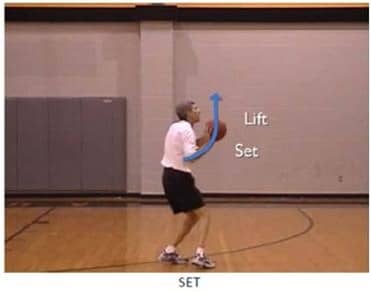
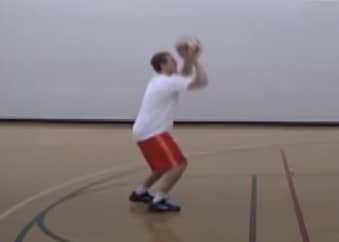
Should You Just Teach the Tuck and Skip the Set Point?
You might be wondering. Well, can I just skip the set point?
What's the point in adding an extra step? It might also create a hitch.
I don't skip the set point. Here's why...
If you study shooters in slow motion, you'll notice that they will "Tuck" or "Dip" the ball as they load their legs.
Next, the ball will start to come up. However, the legs stay loaded.
The start of the jump or the extension of the legs occur when the ball reaches your set point... between the shoulder level and head level.
In the two pictures above and the following GIFs, you can see the legs loaded when the ball is at the set position. The last three GIFs are Steph Curry, Diana Taurasi, and Larry Bird.
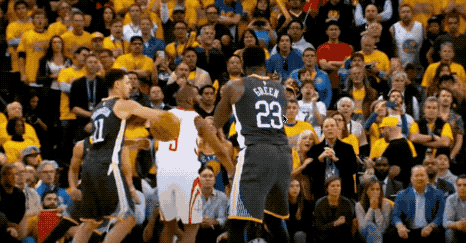
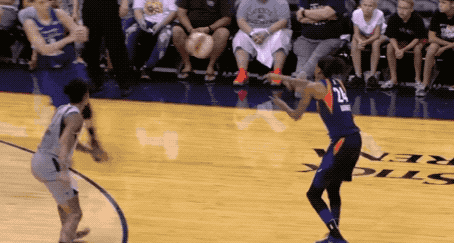
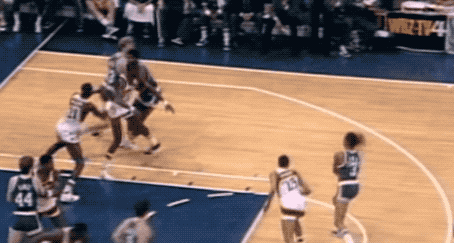
If the shooter starts to extend their legs before the ball reaches the shoulder height, the shooting release can be rushed and disrupt the rhythm, timing, and coordination of the shot...
Here's the GIF from above again to illustrate that issue:

If you don't teach the Tuck and the Set Point, some players will naturally pick it up like I experienced, but others won't. By teaching both, you improve more shooters overall.
Next, I'm going to reveal an "old school" drill that many athletes ignore that is vital for helping with timing, rhythm, and coordination for teaching the Tuck and the Set Point!
I even ignored this initially as a player and a coach...
However, it's vital to developing the proper coordination, timing, and rhythm for becoming a high-level shooter.
I just didn't understand the importance of it until Rick taught me these important concepts.
I can't wait to share it with you next!
And let us know what you think below!
Resources for Better Shooting
Breakthrough Basketball Shooting Camps
What do you think? Do you have other ideas? Comment below!
What do you think? Let us know by leaving your comments, suggestions, and questions...
|
|||


 Facebook (145k Followers)
Facebook (145k Followers) YouTube (152k Subscribers)
YouTube (152k Subscribers) Twitter (33k Followers)
Twitter (33k Followers) Q&A Forum
Q&A Forum Podcasts
Podcasts